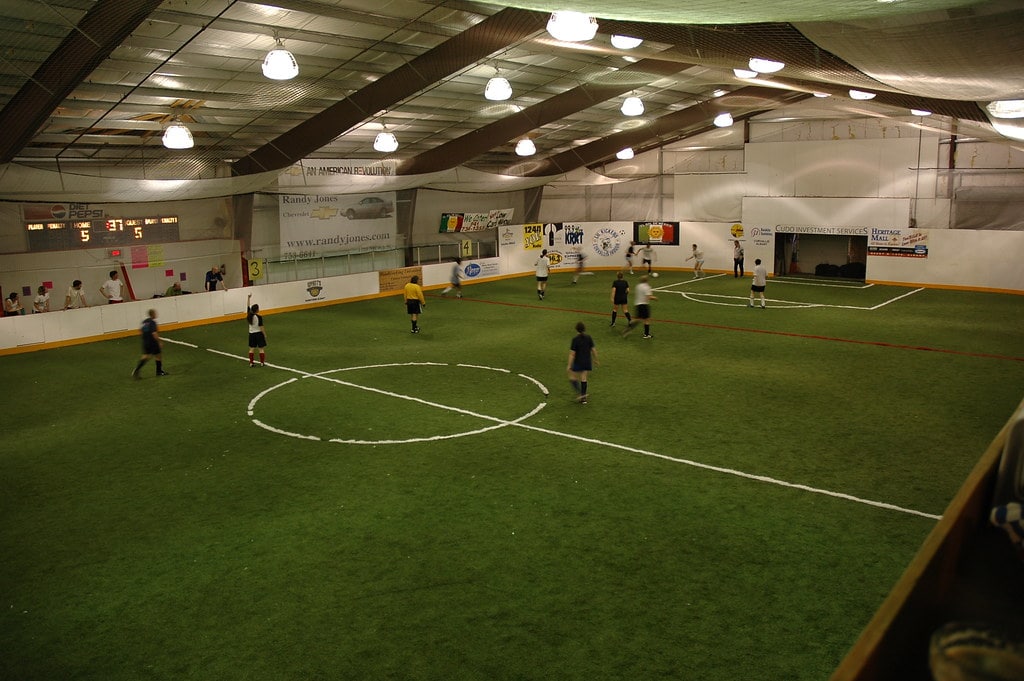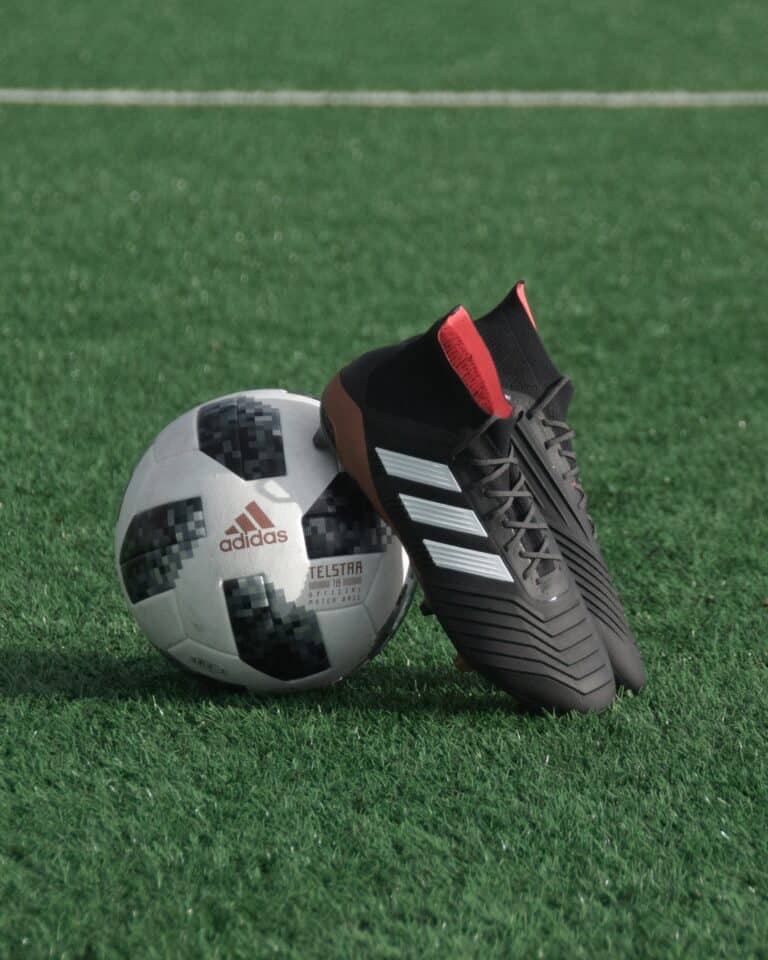The Ultimate Guide to Indoor Soccer: Tips and Strategies
Due to the recent rise in futsal and indoor soccer, you may have certainly been aware of the popularity of indoor soccer. It has many differences from that of regular soccer, which is why you need to first understand the nuances of this sport properly. And if you want to become better as an indoor soccer player, you should definitely read this comprehensive guide.
The information provided in this article will equip you with all the knowledge and skills needed for you to excel in indoor soccer. From understanding the rules of the game to implementing the best tips, get ready to take your indoor soccer game to the next level.
So, without further ado, let’s dive in and uncover the secrets to success on the indoor soccer field!
What is Indoor Soccer?

If you’ve not played this sport yet, you may have wondered what exactly is indoor soccer. Well, imagine taking the intensity, skill, and thrill of traditional soccer and condensing it into a smaller, more compact space. That’s indoor soccer!
Indoor soccer, also known as futsal in some regions, is a fast-paced version of the game that is played indoors on a smaller field. It has a field typically surrounded by walls or boards, creating a boundary that keeps the game condensed into a smaller area. These walls add an extra dynamic to the game as players can use them to their advantage for strategic passes or rebounds.
Indoor soccer is a really cool version of the game that has some interesting differences compared to regular outdoor soccer. One big difference between the two is that there are fewer players on the field. Each team usually has five players, and one of them is the goalkeeper.
Because there are fewer players and a smaller playing area, the game gets super fast and exciting. You’ll see players dribbling the ball lightning-fast, making quick passes, and pulling off amazing moves to outsmart their opponents in tight spaces.
The rules in indoor soccer are also a bit different from outdoor soccer. For example, there’s usually a time limit for the matches, and there may be specific rules in place. We’ll go into more detail about these rules later in this article. These changes make indoor soccer a unique and thrilling experience that both players and spectators love.
If you’re looking to get better at indoor soccer, you can check out our guide on how to play indoor soccer.
Differences Between Indoor Soccer and Futsal

While both indoor soccer and futsal are played indoors, they do have some distinct differences.
In indoor soccer, you’ll find a larger field, typically made of turf, with boards or walls surrounding the playing area. The ball used is slightly bigger and heavier than a traditional soccer ball. It’s a high-energy game that encourages quick transitions, powerful shots, and physical game.
On the other hand, futsal takes place on a smaller court with a hard surface. The ball used is smaller and has less bounce, demanding precise control and delicate touches. Futsal prioritizes technical ability, creativity, and intricate passing plays.
In terms of rules, there are some variations as well. Indoor soccer allows the use of walls, meaning you can play the ball off the boards strategically. In futsal, the walls are off-limits, and the emphasis is on maintaining possession and employing clever movements.
So, while both indoor soccer and futsal offer thrilling indoor alternatives to traditional soccer, they have their own distinct flavors. Whether you prefer the fast and furious nature of indoor soccer or the finesse and precision of futsal, there’s no shortage of excitement and skill on either sport.
And if you want to know more about the distinctions between the two, read our article on futsal vs indoor soccer.
Now that we’ve clarified the differences, let’s dive deeper into the rules of indoor soccer.
Rules of Indoor Soccer
Understanding the rules of indoor soccer is essential if you want to excel on the indoor field. So, let’s break down the key rules that every indoor soccer player should know:
1. Field Dimensions and Markings
Indoor soccer is played on a rectangular field that is smaller than an outdoor soccer field. The most common dimensions are 40-60 meters long and 20-25 meters wide. The length of the field must be greater than the width.
The goals are located at each end of the field and are 12 feet wide by 6 ½ feet high. The center circle is a circle with a radius of 9.15 meters located in the middle of the field. This is where the game starts after each half.
The goal areas are semi-circles with a radius of 6 meters located in front of each goal. The goalkeeper is only allowed to handle the ball in the goal area. The penalty areas are rectangles with a length of 16 meters and a width of 10 meters located in front of each goal. Penalty kicks are taken from the penalty mark, which is located 9.15 meters from the goal line.
The corner arcs are quarter circles with a radius of 1 meter located at each corner of the field. The touchlines are the longer lines of the field. The goal lines are the shorter lines of the field.
2. Kick-ins
Kick-ins are a method used to restart play when the ball goes out of bounds in indoor soccer. Instead of throw-ins like in outdoor soccer, players perform kick-ins by placing the ball on the touchline and using their feet to pass it back into play. The opposing team must give a distance of at least 3 feet from the spot of the kick-in.
Kick-ins offer an opportunity to quickly resume the game and maintain possession or create scoring opportunities. Understanding the proper technique and the strategic possibilities of kick-ins can give players an advantage in keeping the momentum of the game flowing in their favor.
3. Goalkeeper Rules
In indoor soccer, the goalkeeper plays a crucial role in defending the goal and preventing the opposing team from scoring. The goalkeeper has specific rules that differ from outfield players. Here are some key goalkeeper rules to keep in mind:
- Handling the Ball: The goalkeeper is the only player allowed to use their hands within their own penalty area. They can catch, throw, or release the ball with their hands while inside the designated area.
- Distribution: After gaining control of the ball, the goalkeeper can distribute it quickly to restart the game. They can throw, roll, or kick the ball to initiate attacks or set up their teammates.
- Goalkeeper Restrictions: The goalkeeper has some restrictions to maintain fair play. For instance, they cannot handle a back-pass deliberately played to them by a teammate using their feet. In such cases, they must use their feet to play the ball. Also, goalkeepers cannot waste time by carrying the ball in their hands for a long period.
- Goalkeeper Privileges: To protect the goalkeeper, opposing players are not allowed to make physical contact or interfere with the goalkeeper’s ability to release the ball. Any contact or obstruction can result in a foul.
Understanding these goalkeeper rules enables both goalkeepers and outfield players to work together effectively. It also helps goalkeepers make informed decisions on when to distribute the ball or engage in play with their feet. Goalkeepers play a pivotal role in indoor soccer, and knowing these rules can make a significant difference in the outcome of the game.
4. Timekeeping
Timekeeping in indoor soccer is another thing that you need to be aware of. Indoor soccer matches typically consist of two halves, each lasting around 20-25 minutes, resulting in a total game time of 40-50 minutes.
The game clock continuously runs, except during stoppages such as injuries or timeouts. The referee manages the clock and keeps track of the time played.
In certain situations, the referee may add additional time, known as injury time or stoppage time, to account for delays or time lost during the game. This ensures fairness and allows for necessary actions to be completed before the game ends.
At halftime, there is a break for players to rest, regroup, and receive instructions from coaches. While the duration of halftime can vary, it is generally shorter than in outdoor soccer.
Tips for Indoor Soccer

Alright, now that we’ve covered the rules and basics, it’s time to dive into some important tips to help you dominate the indoor soccer field. These tips will give you the edge you need to outshine your opponents and elevate your game to the next level. So, let’s get started:
- Conditioning is Key: Indoor soccer is fast-paced and demanding, requiring quick bursts of speed and agility. So you should focus on improving your cardiovascular fitness, endurance, and overall strength to keep up with the intensity of the game.
- Master Ball Control: With the limited space on the indoor field, precise ball control is extremely important. For this, you need to practice close ball control in tight spaces such as dribbling, shielding, and quick changes of direction. Moreover, you need to work on your first touch to ensure you can receive and control the ball effectively in tight spaces.
- Utilize the Walls: Take advantage of the walls or boards surrounding the field. Use them to your advantage by playing accurate passes off the walls, creating unexpected angles, and catching opponents off guard. Also, be mindful of your positioning to capitalize on rebounds and create scoring opportunities.
- Communication is Key: Effective communication with your teammates is also important in indoor soccer. You should constantly communicate your intentions, call for passes, and provide support within the game. Clear and concise communication can lead to better coordination, quick transitions, and cohesive team play.
- Play Smart Defense: Defending in indoor soccer requires a balance of aggressiveness and discipline. To defend properly in indoor soccer, you’ll have to stay compact, mark opponents closely, and anticipate their moves. Also, you will need to use your body positioning to deny passing lanes and force opponents into making mistakes. Remember, smart defensive play can create turnovers and lead to counter-attacking opportunities.
- Quick Transition Game: Indoor soccer is known for its rapid transitions from defense to offense. So, you should always look to be alert and ready to switch gears instantly. When your team gains possession, look for quick outlets or forward passes to launch a fast and effective counter-attack.
- Take Shots from Anywhere: Don’t hesitate to take shots at the goal from anywhere on the field. The compact nature of indoor soccer means that goal-scoring opportunities can arise unexpectedly. Especially since indoor soccer fields are quite small, players can score goals from anywhere on the field. With an accurate and a powerful shot, you can score a lot of goals by catching the keeper off-guard.
- Maintain High Energy: Keep your energy levels up throughout the game. Stay mentally focused and physically engaged. Indoor soccer demands constant movement and involvement, so never let your intensity drop.
- Wear the Best Shoes: While playing indoor soccer or futsal, you need to have different soccer shoes compared to the ones you need for soccer. Unlike outdoor soccer shoes, indoor shoes do not have studs in the soles. If you are on the lookout for some indoor shoes, check out our list of the best indoor soccer shoes.
Remember, practice makes perfect. Dedicate time to work on these tips, both individually and with your team. The more you incorporate them into your game, the more confident and effective you’ll become on the indoor soccer court. So, go out there, give it your all, and enjoy the fast-paced thrill of indoor soccer!
If you want some more tips and tricks, then check this article out.
Benefits of Indoor Soccer

Indoor soccer offers a plethora of benefits that make it a fantastic choice for players of all skill levels. Let’s explore some of the advantages of playing indoor soccer:
- Year-Round Play: One of the significant benefits of indoor soccer is that you can play it all year round, regardless of weather conditions. No need to worry about rain, snow, or scorching heat. Indoor facilities provide a controlled environment, allowing you to enjoy the game consistently throughout the year.
- Skill Development: The confined space of indoor soccer sharpens your skills. The fast-paced nature of the game enhances your reflexes, agility, and decision-making abilities. With limited time and space, you’ll learn to think quickly, make accurate passes, and improve your ball control.
- Fitness and Endurance: Indoor soccer is a fantastic way to stay fit and boost your endurance. The high-intensity nature of the game keeps your heart rate up, improves cardiovascular fitness, and burns calories. Continuous movement and quick transitions provide an excellent aerobic workout.
- Teamwork and Communication: Indoor soccer thrives on teamwork and effective communication. The smaller playing area encourages constant interaction with teammates, making communication vital for success. You’ll learn to coordinate plays, anticipate each other’s moves, and develop strong bonds with your teammates.
- Tactical Awareness: Indoor soccer enhances your tactical awareness and strategic thinking. The limited space requires you to constantly read the game, adapt your positioning, and make quick decisions. You’ll develop a better understanding of formations, movement off the ball, and exploiting gaps in the defense.
Final Thoughts
In summary, indoor soccer offers a fast-paced and challenging experience for players of all levels. It enhances skills, fitness, and strategic thinking while providing year-round play. Whether you’re looking to improve your game or enjoy the thrill of competition, indoor soccer delivers a dynamic and rewarding environment. So, step onto the indoor field and embrace the excitement and opportunities that indoor soccer has to offer.
Related Articles:







